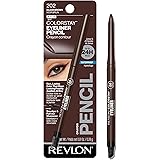The discerning collector knows. A fragrance is more than a fleeting aroma. It is a carefully orchestrated symphony for the senses. What truly sets these elite formulations apart?
Decoding Your Scent’s Strength: From EDT to Pure Oil
The conversation in the video touches upon a critical distinction: “eau de toilette… eau de parfum or… oil?” This query highlights a fundamental aspect of **luxury fragrance**—concentration. Fragrance strength isn’t just a label. It dictates longevity, projection, and overall experience.
Most are familiar with Eau de Toilette (EDT) and Eau de Parfum (EDP). EDTs typically contain 5-15% aromatic compounds. EDPs are stronger, often 15-20%. These use alcohol as a carrier. This alcohol allows for broader diffusion. It creates a vibrant initial *sillage*.
But then there’s the “oil of the perfume.” This is where true depth resides. The salesperson aptly calls it “the honey of the other one.” This refers to *Extrait de Parfum*, or pure perfume oil. Its concentration ranges from 20-40%, sometimes even higher. Alcohol is either minimal or absent. Instead, a carrier oil is used. This provides a richer, more intimate scent. It clings closer to the skin. The release is slower, more deliberate. The evaporation curve differs greatly. This results in exceptional longevity. A single application can last for many hours. The *olfactory profile* unfolds majestically. It’s a profound, personal experience. This is the “strong stuff.”
The Potency of Pure Perfume Oil
Perfume oil’s composition offers distinct advantages. Its molecular structure allows for sustained release. Alcohol-based sprays can sometimes assault the initial notes. They cause a flash of aroma. Oils, however, meld with skin chemistry. This creates a bespoke aura. The scent becomes uniquely yours. It’s less about announcing your presence. It’s more about leaving a memorable, lingering impression. This subtle power is highly prized. It signifies a profound understanding of scent. It moves beyond mere casual application. It becomes a conscious act of adornment.
The True Cost of Elite Perfumery: More Than Just Scent
The $7200 price tag prompts a natural question. What justifies such an expense? It’s far more than mere ingredients. It’s a confluence of artistry, rarity, and meticulous craftsmanship. An **expensive cologne** in this tier isn’t just mixed. It’s created.
Rare Raw Materials and Masterful Blending
At the heart of any **luxury fragrance** are its raw materials. Think of the world’s most precious commodities. They feature prominently here. Consider pure oud from sustainable forests. Or the elusive ambergris, harvested ethically from the ocean. Real Grasse jasmine, hand-picked at dawn. Orris butter, aged for years. These aren’t synthetic approximations. They are nature’s finest. Their acquisition is costly. Their processing is labor-intensive. A single kilo of Bulgarian rose oil requires thousands of blossoms. This elevates the intrinsic value. Each drop contains potent botanical extracts.
Then there are the master perfumers. They are essentially olfactory architects. They possess an almost alchemical skill. They blend these rare components. They create complex *accords*. These harmonized notes form the fragrance’s core. Their vision and expertise are invaluable. A perfumer’s signature touch is unmistakable. It defines the character of the scent. This creative genius commands a premium. It represents years of dedicated training. It’s an art passed down through generations. This elevates the fragrance to haute parfumerie.
The bottle itself often contributes to the mystique. The video mentions the bottle is “in the Smithsonian too.” This speaks volumes. It’s not just a container. It’s a piece of art. It’s design elevated to an exhibition-worthy status. Hand-cut crystal, bespoke stopper designs, precious metal embellishments. These details are part of the allure. They enhance the overall experience. They make the act of application a ritual. This adds another layer to the cost. It’s an investment in beauty and permanence.
Time, Craft, and Maceration
The creation of an **expensive cologne** is a patient process. It isn’t rushed. After blending, the concentrate undergoes *maceration*. This is a crucial aging period. It allows the aromatic compounds to marry. They deepen and integrate. This can take weeks, even months. It ensures stability. It enhances the scent’s complexity. It prevents individual notes from jarring. Skipping this step would compromise the final product. It would yield a less cohesive scent. Maceration is followed by filtration. Then further maturation. This meticulous timeline ensures perfection. It is a testament to artisanal dedication. Such commitment to quality distinguishes these fragrances.
Mastering the Dab: Elevating Your Fragrance Experience
One of the most valuable insights from the video is about application: “Don’t rub it. You just dab. Dab here, dab there.” This seemingly simple advice is critical. It preserves the *olfactory profile* of a **luxury fragrance**.
Rubbing cologne is a common mistake. It generates heat. This heat accelerates the evaporation of top notes. These are the lightest, most volatile compounds. They are meant to introduce the scent. They create the initial impression. Rubbing disrupts this delicate balance. It causes them to vanish too quickly. It can also ‘bruise’ the fragrance molecules. This distorts the intended scent journey. It’s like skipping the overture of a symphony. You miss the intended introduction.
Instead, gently dab the fragrance onto pulse points. These areas radiate heat. They help diffuse the scent naturally. Think wrists, neck, behind the ears, inner elbows. The skin’s warmth slowly unfurls the fragrance. It allows the top, middle, and base notes to emerge. They reveal themselves in their intended sequence. This ensures the full, complex character is experienced. This subtle release creates a more elegant *sillage*. It’s a respectful approach to the perfumer’s art. It maximizes the enjoyment of your **expensive cologne**.
Journey Through Scent: Understanding Fragrance Notes
The customer describes specific “top notes of like sage, lemon, and seawater.” This is an astute observation. It highlights the structured nature of **luxury fragrance**. Fragrances are built like pyramids. Each layer contains distinct notes. They appear sequentially. This creates an evolving experience.
The Olfactory Pyramid: Top, Heart, and Base
**Top notes** are the first impression. They are vibrant and immediate. Lemon provides a zesty, bright opening. Sage offers an aromatic, slightly herbaceous quality. Seawater conjures a fresh, invigorating aquatic breeze. These notes evaporate quickly. They clear the way for deeper layers.
**Heart notes** (or middle notes) emerge next. They form the core of the fragrance. They are usually softer, rounder. Floral, spicy, or green notes reside here. They define the scent’s character. They bridge the gap between initial zest and lasting warmth. While not explicitly mentioned in the video for this specific scent, these notes are crucial. They provide continuity and body.
**Base notes** are the foundation. They are rich, heavy, and long-lasting. Think amber, oud, musk, vanilla, or sandalwood. They provide depth and anchor the fragrance. They create the scent’s lasting impression. This is the “dry down.” The customer’s remark, “It smells so rich,” likely refers to this complex interplay. It points to a sophisticated blend. The full **olfactory profile** develops over hours. It tells a story on the skin.
The Scent of Influence: Why Leaders Choose Luxury Fragrances
The ultimate endorsement in the video is striking: “This brand is made for some of the most powerful people in the world. Obama, Bush, Arnold Schwarzenegger. Your nose job. Wealth.” This connects **luxury fragrance** directly to status, power, and **personal branding**.
A signature scent is more than just a pleasant smell. It’s an invisible accessory. It communicates without words. For powerful figures, every detail matters. Their choice of an **expensive cologne** is deliberate. It reflects their curated image. It speaks to discernment and sophistication. It projects an aura of confidence. It signifies an appreciation for quality. It shows an investment in self-presentation.
Consider the psychology. Scent is intimately linked to memory and emotion. A unique, high-quality fragrance creates a distinctive impression. It ensures memorability. It associates the wearer with exclusivity. It solidifies their personal brand. It’s an extension of their identity. It underscores their position. For those who command attention, a **luxury fragrance** is not just a indulgence. It is a strategic tool. It enhances their presence. It leaves a lasting, powerful impression. It is the olfactory embodiment of success and influence.











